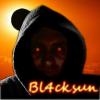
Posted
For the last few days I've been working on a project in Cubase, and using Omnisphere. My audio interface is RME's Fireface UFX. Also, I'm using Windows 10.
I wanted to set things up such that 4 Omnisphere patches would each go to separate Omnisphere outputs, and then to 4 separate audio output buses on the Fireface. I want this because I have a hardware effects unit that can handle 4 separate effects chains simultaneously. So if each Omnisphere patch is on its own separate audio bus, then I could send each patch to a different effects chain, and make various changes in realtime.
Step 1 was to activate additional Omnisphere outputs. In my Cubase instance of Omnisphere, there is an icon in the upper right which is called Functions, and it has a dropdown menu that allows me to activate additional outputs. Output A was already active, so I activated outputs B thru D, and then assigned each of 4 patches in Omnisphere Multi to one of these outputs.
Step 2 was to go to Cubase's Audio Connections utility and create additional output buses. I already had stereo 1, so I had to create stereo 2 thru 4 and assign them to my audio interface.
Step 3 was to route the Omnisphere outputs to the proper Fireface audio buses, which I did in Cubase's MixConsole, in the Routing section.
Wa-lah...It works!
It's nice to be able to do this in Cubase, but having the ability to do so in Synfire, with its prototyping capabilities, would be awesome. I'd be able to hear what things are actually going to sound like, before switching over to Cubase.
But there is no Functions icon in my Synfire instance of Omnisphere (or at least I haven't found it yet), meaning I cannot activate additional Omnisphere outputs.
And I don't see a way to create additional audio output buses in Synfire, and then assign them to my audio interface. All instruments go to the one and only audio output bus.
So is my desired setup just not possible in Synfire? Or do I need to use the dreaded drones, which I have avoided lo these many years?
Thank you.
Di., 24.05.2022 - 16:57 Permalink
On Mac with Synfire Pro v2 I was able to do it, if I understood your question.
You can drag Omnisphere from left panel to track. You'll asked if you want one or multichannel (16 channel multitimbral). Once done, make sure to select the right channel in instrument inspector.
A multichannel instrument track can be duplicated so you may refer to same Omnisphere instrument but adjust the channel.
Di., 24.05.2022 - 19:09 Permalink
Cliff:
What you're describing is a totally different thing than what I'm trying to achieve. Having a multitimbral VSTi simply means I can feed (for example) 1-16 MIDI channels into it, each MIDI channel sounding a different part. It doesn't mean the audio thus generated will be routed to separate output buses in my audio interface.
Thanks anyway.
Di., 24.05.2022 - 23:04 Permalink
Synfire supports only basic built-in audio mixing currently. One stereo MASTER bus and one stereo AUX bus for effects. This might be extended in the future. if you need to compose with a more elaborate audio mix, you can set that up in the DAW and use Drones for the plug-ins.
In my experience, for the purpose of composing a piece, a more sophisticated sound than stereo is rarely worth the effort of setting up a synchronized project, which by the way slows down response times a bit during editing. Admittedly, the full Ooomph can be a lot more fun, which of course is an important factor too. It's on the long term wish list.
Mi., 25.05.2022 - 16:26 Permalink
Strange enough, i can't find now anymore the stereo MASTER bus and one stereo AUX bus for effects.
Update: its rather hidden..found it again
The operation for the Master module is to add an effect to the master bus
- set the amount of effect on the master bus in a vst plugin itself (a reverb)
- volume control master bus
Di., 24.05.2022 - 23:36 Permalink
Andre:
I guess I need to find a concise tutorial for setting up to use drones in Synfire 2. I've been looking through the manual, but the info is not all in one place or very clear to me.
My end goal is not a surround mix, just stereo. But for an ambient project, for example, the effects used are an important compositional element. I don't want to have to guess what a project will actually sound like in my DAW; I want to be able to hear that while still in Synfire. Because my hardware effects unit can process 4 stereo audio channels simultaneously, I'd like to be able to send it 4 streams of audio, each of which could then be effected separately.
It seems to be possible by using the Cubase configuration I wrote of earlier in this thread, assuming I can figure out how to use drones.
Thanks for responding.
Mi., 25.05.2022 - 21:00 Permalink
Here's the task description in the manual.
We don't have a 2.0 video yet, but the one for 1.x should still be somewhat helpful.
Mi., 25.05.2022 - 22:05 Permalink
I take a look at that, and thank you for bringing it to my attention.
However, what I've learned so far in my tenuous excursion into the tangled world of drones is that the drone version of Omnisphere is actually based in Synfire, not my DAW (Cubase). This means, as noted previously, that it has no ability to activate additional Outputs.
Dang. (That's short for "Curses, foiled again".)
BTW, ReWire is no longer supported by Reason Studios, therefore Steinberg has dropped it from Cubase 12. I had to revert to Cubase 11 to load ReWire. No big deal for now, but eventually it may turn into a problem. I hope some new ReWire-ish analog/clone is in the works somewhere.
EDIT: I just found the dropdown menu in the Drone version of Cubase (in the upper right corner), and it does have the Activate Ouputs menu item. However, the only item on that menu is "Drone (Stereo)". It doesn't give me the option to activate anything other than that stereo output. And I guess I'm still confused as to just where that instance of Omnisphere is based...in Cubase or Synfire, or perhaps both.
Mi., 25.05.2022 - 23:26 Permalink
If you cant get multiple outputs to work in Cubase via a drone with omnisphere loaded in the drone, you could set the drone up as a midi drone, then you can route each midi channel to omnisphere on its own instrument track in cubase (assuming cubase supports a vsti with multiple outputs).
Do., 26.05.2022 - 00:21 Permalink
Wasn't that with "relocate" function in Synfire you can transfer a synfire arrangement with vsti's to Cubase ?
(look in the embedded help for the keyword : "relocate")
Once transferred into Cubase, all Vst's could further follow an audio routing there.
Cubase supports a multi-timbral vsti.
Do., 26.05.2022 - 01:14 Permalink
it depends if the drone provides multiple audio outputs. if not the only way to support multiple outputs is to use midi drones and place your vsti on a seperate track, routing the midi from the drones to the various midi inputs of the vsti via normal cubase midi routing.
Do., 26.05.2022 - 02:35 Permalink
blacksun:
This seems like it should work, but I'm not quite there yet.
I'm going to keep tweaking.
Thank you for this suggestion.
Do., 26.05.2022 - 02:38 Permalink
janamdo:
I know I can transfer everything over to my DAW, but I want to keep things in Synfire for as long as possible so I can take advantage of Synfire's prototyping abilities, especially in a project where effects are a major element. Once I get a project sounding basically the way I want it I can send it over to my DAW for the final touches.
Thanks anyway.



